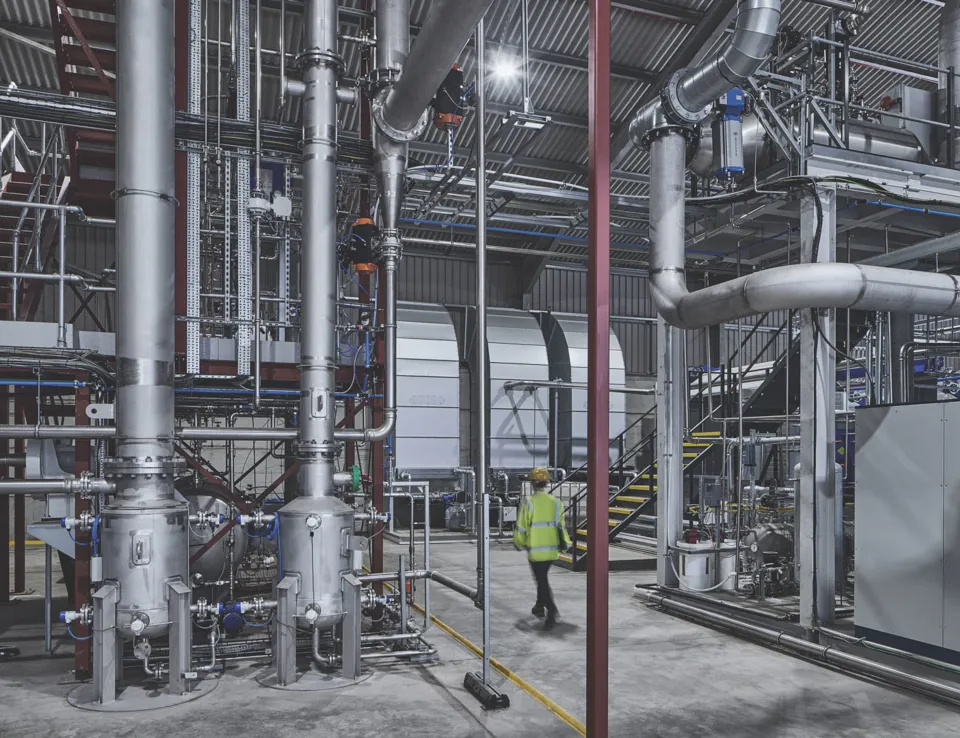How UK agriculture can tackle soaring costs and meet new carbon regulations
Agricultural producers are grappling with escalating costs for essential resources like CO₂, fertilizer and energy, compounded by increasing regulatory pressures to reduce carbon emissions. These rising expenses not only threaten profitability but also create challenges in maintaining a reliable supply of critical inputs amid global market volatility. The situation demands innovative solutions that not only reduce costs but also help farmers meet sustainability goals.
Enter BIOCCUS: a game-changer for agriculture
By leveraging local, sustainable, and low-cost waste products, BIOCCUS enables the production of essential resources — energy, CO₂, and biochar — directly on-site. This approach offers farmers greater control over input costs, boosts resilience, and reduces dependency on external suppliers. Additionally, it has the potential to provide new revenue opportunities through the sale of any excess by -products like biochar and food-grade CO₂.
As a combined heat and power technology, BIOCCUS enables the farming, agriculture and commercial growers’ sector to cut emissions and benefit from security of supply and a virtuous circle of production. Easy to locate on a farm and fed by sustainable bio-wastes from local sources at a lower cost than natural gas, BIOCCUS can securely and continuously supply clean energy, heat, food-grade carbon dioxide and biochar – minimising risks from price volatility or breaks in supply and increasing operational resilience.
Resilient and sustainable energy
By using readily available, un-processed, sustainably sourced biomass or process wastes there are opportunities for local sourcing of the feedstock used to power the plant, with the added advantage of the technology being easily accommodated on farm sites, reducing life cycle impacts.
The feedstock for the plant can comprise sustainably sourced waste wood from timber production, green waste from agriculture or commercial growing, horticultural cuttings, or even animal waste such as poultry litter. Sawmills and furniture factories could also provide sufficient woodchip to be suitable for the system.
Nutrient rich fertiliser to improve soil health
The technology captures a significant amount of the carbon content of the feedstock through production of biochar (a product similar to charcoal), which improves soil fertility – a product that is much in demand in organic farming for soil enrichment – but which can also be used by farmers, anaerobic digester operators and wastewater treatment sites.
There has also been a marked increase in demand for biochar as a supplement to animal feed in livestock farming as it suppresses methane emissions generated in the digestive process. In regions such as Europe and North America where meat consumption is still very high, the demand for biochar is therefore expected to continue to grow substantially in the future.
Given the benefits of carbon sequestration and water retention that biochar offers to the agriculture sector, leading to increased crop yield and productivity, analysts have predicted that the global biochar market size is estimated to reach USD 3.1billion by 2025 and is expected to expand at a compound annual growth rate of around 14% in the next decade.
Affordable, food-grade CO2 on tap
By maintaining higher CO₂ levels in controlled-environment agriculture, especially greenhouses, food-grade CO₂ is used to enrich the air around crops, farmers can significantly enhance photosynthesis boosting crop yields, improving growth rates, and enhancing plant quality. Many crops, like tomatoes, cucumbers, and leafy greens respond well to CO₂ enrichment, leading to faster growth and higher productivity, especially when paired with optimal light and temperatures.
When used for storage and transport purposes, industrial or food-grade CO₂ creates a CO₂-rich atmosphere to slow spoilage, inhibit microbial growth, and extend shelf-lives of grains, fruits, and vegetables during storage and transport – all of which reduce food waste and maintain produce quality. CO₂ can also be used in pest control for grains and other stored products by creating a CO₂-rich environment, killing pests without the use of harmful chemicals, helping to preserve organic certifications and adherence to regulations on pesticide use.
And, for those involved in fish farming or aquaculture, CO₂ is used to regulate water pH, making it suitable for different fish species. This can create optimal conditions for aquatic life, improving growth rates and overall farm productivity.
Taking back control
By installing negative emission cogeneration technology, such as Ricardo’s BIOCCUS, farmers and those in the agricultural sector can take steps to respond to the current price volatility and supply challenges of essential resources, minimising financial risks.
Adopters of the technology may also seek to capitalise on the alternate income streams created through providing energy to co-habited businesses, off-take of excess high-quality CO2, or through commercialising the nutrient-rich biochar – all of which support the future-proofing of agricultural livelihoods.
In an industry facing both budget and environmental pressures, BIOCCUS stands out as a solution for sustainable, reliable growth. Speak to our consultants today, to understand the opportunities available to your agriculture business.









